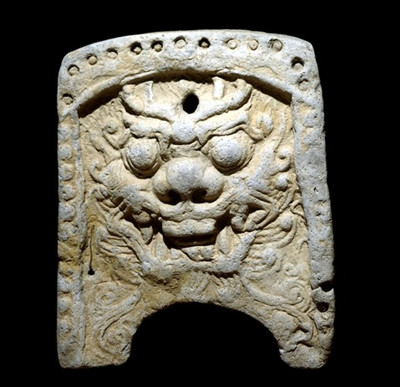The united Silla kingdom, prosperous and secure at the end of the Silk Road, stands as one of the great periods of creativity and learning in Korean history, a "golden age" of architecture and literature, astronomy and mathematics. Fearsome dragon roof tiles like the one here at the British Museum long continued to be a feature of the roofscape in Kyongju and beyond. And the legacy of the Silla is apparent in Korea even today, as Choe Kwang Shik, Director General of the National Museum of Korea, tells us, via an interpreter:
在朝鮮半島歷史上,位于絲綢之路末端的統一繁榮的新羅王國開辟了一個重要的創新與學習的時代,這也是建筑、文學、天文和數學發展的“黃金時代”。威猛的龍瓦當一直留在慶州的屋桅上,流傳至今。今天在韓國仍能看到新羅國留下的遺產。韓國國家博物館館長崔光植通過一名翻譯告訴我們:
"The cultural aspect of the roof tile still remains in Korean culture...and even if you go to the city of Kyongju now, you can see in the streets that the patterns still remain on the road, for instance. So, in that aspect, the artefact has now become ancient, but it survives through the culture. And, in a sense, I think Koreans feel that it is an entity, as if it's a mother figure. So I think in that sense Silla is one of the most important in Korean history."
我認為韓國人從某種意義上將其看作一種實體,一種母親的形象。因此可以說新羅仍是韓國歷史上最重要的時代之一。
But in spite of surviving street patterns and strong cultural continuities, not everyone in Korea today will read the Silla legacy in the same way, or indeed claim the Silla as their mother culture. Here's Jane Portal again.
盡管這種街道裝飾與文化傳承至今,但并不是每一個朝鮮半島居民都對新羅的文化遺產有同樣的解讀,也不是所有人都認為它是今天朝鮮半島的母體文化。白珍再次進行解釋。












